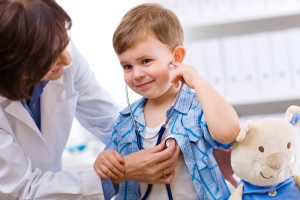
Is universal cardiovascular screening supported by the data, and are clinicians ready?
In 2011, the National Heart, Lung, and Blood Institute (NHLBI) guidelines for cardiovascular risk reduction in pediatrics reinforced the recommendation that primary care pediatricians (PCPs) should screen children and adolescents for cholesterol and blood pressure elevations. However, as PCPs try to incorporate it into their well childcare routine, questions are being raised about the practical implications of implementing that recommendation.
Last month, the U.S. Preventive Services Task Force (USPSTF) published its finding that there is not enough evidence to recommend for or against routine screening for primary hypertension in asymptomatic children and teens, repeating its suggestions from 2003. It has issued similar statements about lipid screening.
At this week’s 2013 American Academy of Pediatrics (AAP) conference, Sarah de Ferranti, MD, MPH, director of the Preventive Cardiology Clinic at Boston Children’s Hospital, gave a presentation titled “Universal Lipid Screening: Are Pediatricians Doing It and How Is It Working?” She spoke with Vector about screening both for cholesterol and blood pressure in children. Full story »

Medicine is a balancing act; how much of a drug is too much? A group of compounds called EETs provide a clear example of the possible dangers of giving patients too much of a good thing. (chris grabert/Flickr)
Usually when your doctor talks to you about lipids, he or she is talking about cholesterol (be it the good or bad kind). But cholesterol is only one kind of lipid. There are millions of these fatty molecules working in everyone’s body right now.
One family of lipids, known as EETs (or epoxyeicosatrienoic acids), is produced by the endothelial cells that line blood vessels, where they help control inflammation and the response to injury. Because EETs are also potent regulators of blood pressure, pharmaceutical companies are looking intently at compounds that raise bloodstream EET levels as a way of managing the cardiovascular aspects of more than 20 conditions, ranging from diabetes and stroke to kidney and eye diseases; some are currently in clinical trials.
There may be a catch, however: Some studies suggest that EETs promote angiogenesis, or blood vessel formation, and that the enzymes that process EETs have a relationship to cancer.
Dipak Panigrahy and Mark Kieran of Children’s Vascular Biology Program and the Dana-Farber/Children’s Hospital Cancer Center wanted to understand this relationship better: Could boosting EETs be dangerous? Full story »









